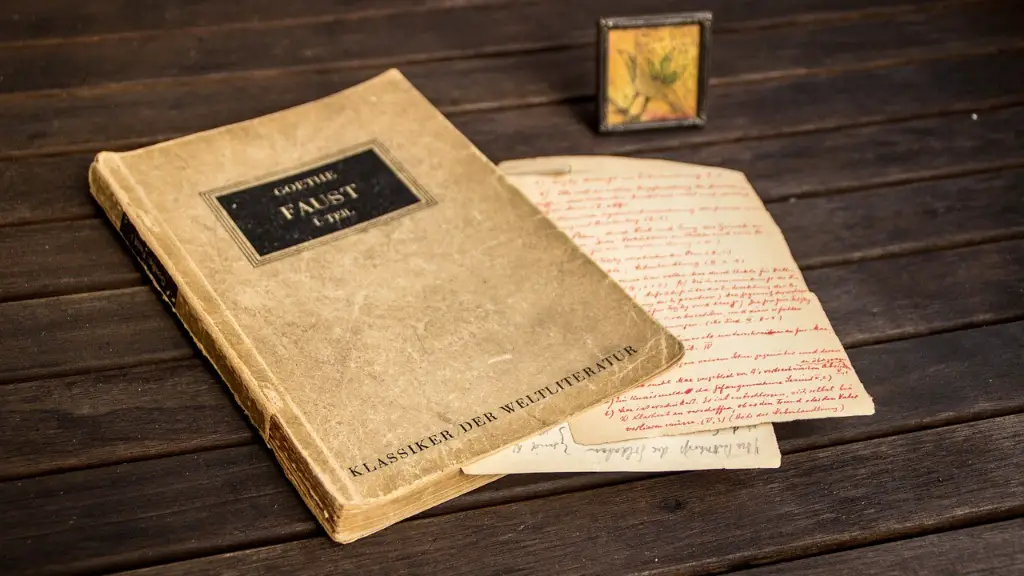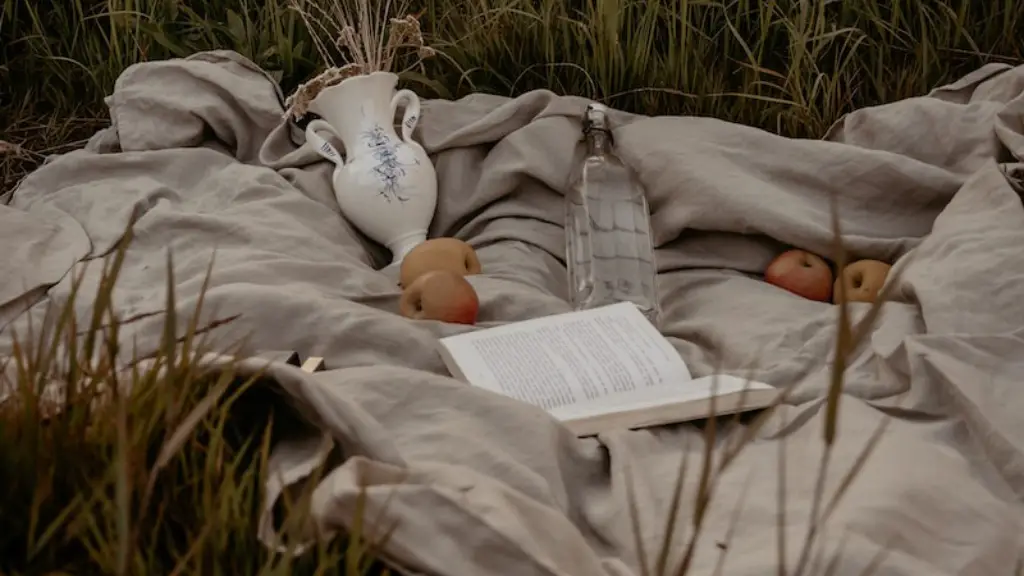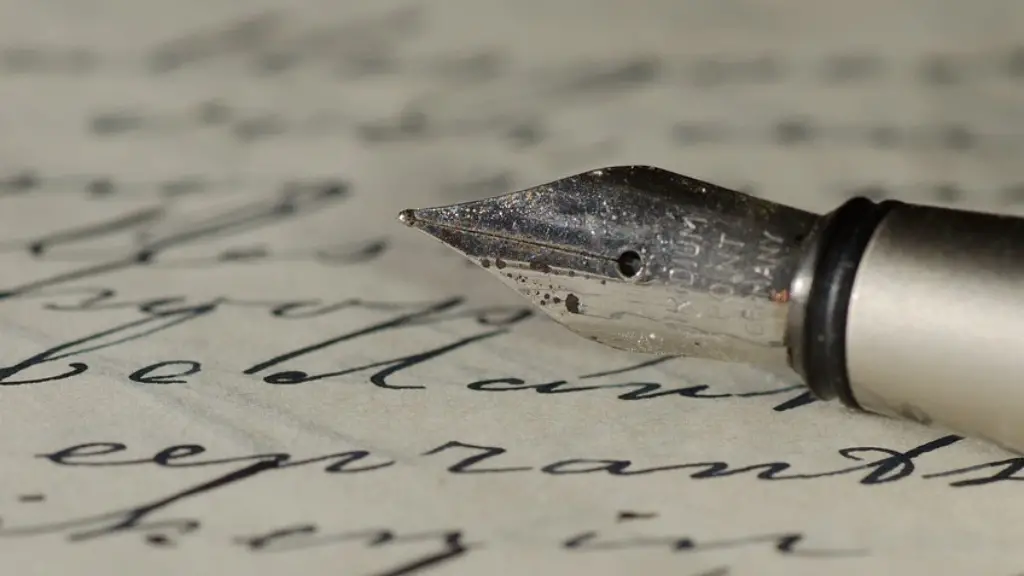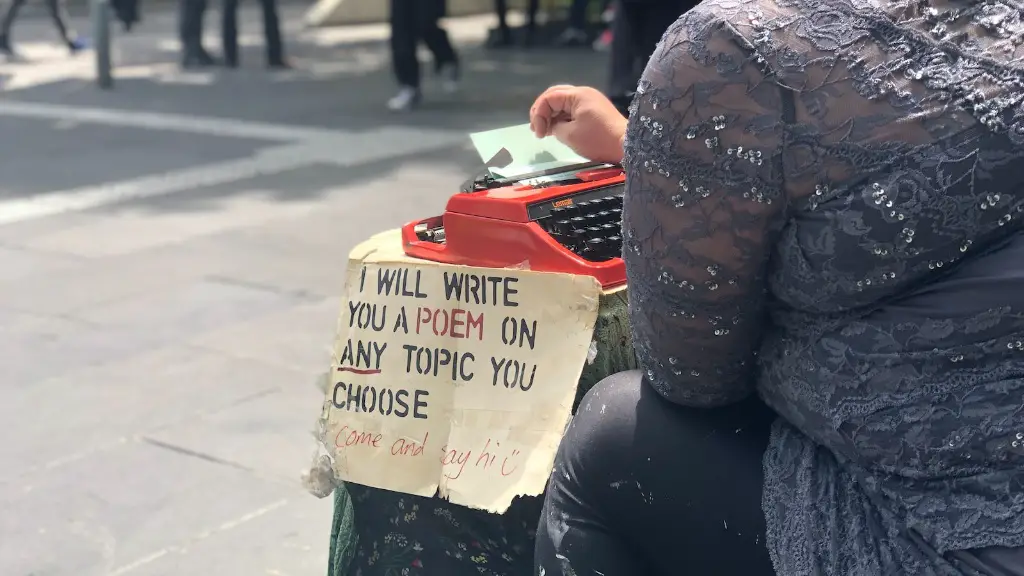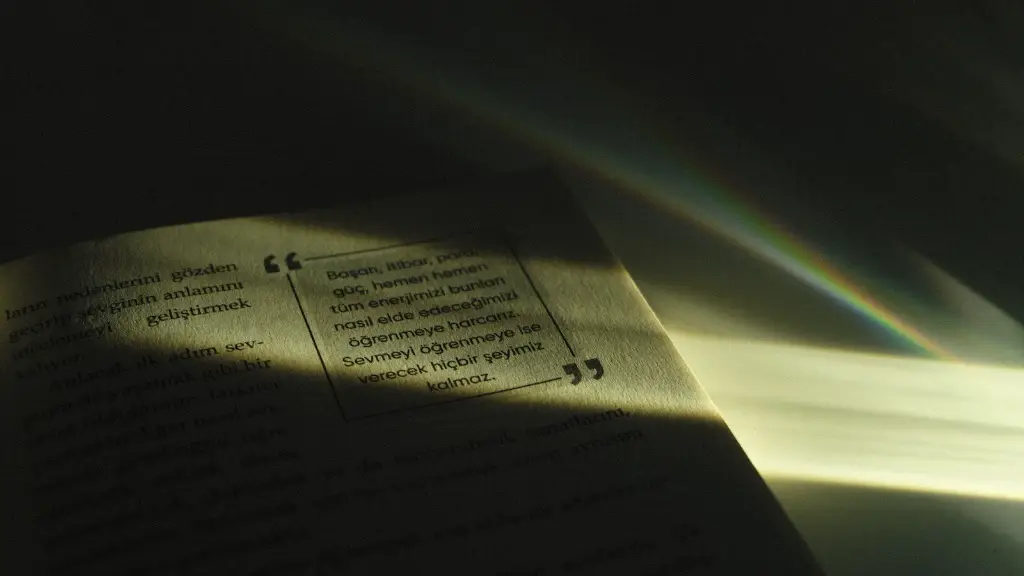What is abstract imagery in poetry? Abstract imagery is a form of figurative language that uses words to paint pictures to express a style or idea. It is used in both prose and poetry to create vivid, evocative language without relying on literal descriptions. It can be an effective way to create vivid, imaginative descriptions of anything from people to nature.
Abstract imagery is often used to connect ideas that may not have an obvious connection. By combining seemingly unrelated words, it allows authors to evoke emotions and create a deeper image than if they used literal language. It is particularly effective when used to create strong visual and emotional effects. For instance, a poem that uses abstract imagery might evoke images of a dark and gloomy forest filled with dread and foreboding.
Abstract imagery prompts readers to envision a scene without being explicitly told what the scene looks like. This subtle form of language allows authors to create an audience of their own. It gives the readers a chance to provide their own interpretation and to create a story using their own imagination.
Experts say that abstract imagery is especially effective in poetic literature because it allows poets to communicate ideas that cannot be expressed using literal words or conventional imagery. By using a variety of abstract words and meanings, poets are able to evoke strong emotions and create powerful visual images.
In addition to evoking strong emotions, abstract imagery is also used to convey ideas that cannot be expressed in literal terms. For example, a poet might use abstract words to talk about love and joy, even though these concepts can’t be explained with literal words. By thinking outside of literal language, authors are able to communicate with readers on a deeper level and create stories that are more powerful and memorable.
Historical Context
Abstract imagery has been a popular technique in poetry and literature for centuries. Ancient Greek and Roman poets used abstract imagery to communicate ideas and emotions, as did medieval and Renaissance authors. Even William Shakespeare made extensive use of abstract imagery in his works, including his famous sonnets.
In the Romantic era, many of the most famous poets were notable innovators when it came to using abstract imagery. Percy Bysshe Shelley and John Keats were two of the most influential Romantic poets, and both used abstract imagery extensively. Shelley was a master of creating vivid and evocative images using abstract words, while Keats was renowned for his ability to express unimaginable emotions using abstract language.
Today, abstract imagery is still an essential tool for authors, poets, and songwriters. It allows authors to combine seemingly unrelated ideas to create powerful messages and evoke deep, emotive images. By utilizing abstract words and images, authors are able to communicate ideas that might not be expressible in literal terms.
Examples of Abstract Imagery
Abstract imagery is often used to depict abstract concepts such as love, fear, joy, and sadness. For example, a poem might use the phrase “Hearts like stars” to express the idea of infinite love. This phrase does not describe a literal scene but instead uses words to evocatively convey the idea of love and everlasting affection.
Abstract imagery can also be used to express complex emotions, such as the feeling of being overwhelmed. A poem might describe this feeling with the phrase “The world too wide and my shoulders too small.” This phrase conveys a complex feeling without relying on literal language.
Abstract imagery is often used to express abstract ideas in an interesting and engaging way. For example, a poem might use the phrase “A sea of possibilities” to express the concept of having endless opportunities. This phrase uses abstract words to capture the idea in a more vivid, engaging way than if the author had used literal language.
Abstract imagery can also be used to evoke a particular atmosphere or tone. For example, a poem might use the phrase “A shadowed mist of deepening dusk” to create the feeling of a dark, mysterious atmosphere. By combining abstract images, the poem is able to communicate a mood and atmosphere in an evocative way.
Advantages and Disadvantages
Abstract imagery has many advantages, particularly when compared to traditional, literal language. It allows authors to express complex emotions and ideas without relying on literal descriptions. This subtle, evocative style of writing is often more powerful and engaging than literal language. It also allows authors to create vivid, imaginative scenes without relying on traditional, literal descriptions.
However, abstract imagery also has its drawbacks. Some readers may find it difficult to grasp the meaning of abstract language, as it can be more open to interpretation than literal language. Also, a risk of using abstract language is that readers may not get the intended message, or that they may misinterpret the message. Therefore, authors should be careful to make their abstract imagery clear and concise to avoid confusion.
Conclusion
Abstract imagery is a powerful tool for authors and poets. It allows them to create vivid descriptions of abstract concepts and emotions. By combining abstract imagery with literal language, authors are able to communicate their ideas in a vivid and evocative way. Although there are risks associated with using abstract language, when used correctly it can be a powerful tool for evoking strong emotions and creating engaging stories.
Uses in Modern Culture
Abstract imagery is widely used in contemporary culture, from music and film to advertising and social media. Many modern songs make extensive use of abstract imagery, such as Coldplay’s “Fix You,” which uses the lyrics “Lights will guide you home and ignite your bones” to evoke powerful emotions. Similarly, abstract imagery is used in movies and television shows, such as the hit series Game of Thrones, which uses powerful abstract words to evoke the feeling of a violent, chaotic world.
In advertising, abstract language is often used to evoke vivid images in the mind of the reader. For example, a magazine ad might use the phrase “A world you never knew existed” to create a powerful, evocative image without describing the literal details of the product. Similarly, social media platforms often use abstract language to create engaging posts that capture the attention of users.
Overall, abstract imagery is an important part of modern culture. It is used to evoke emotions and vivid imagery without relying on literal language. By combining abstract words and images in an imaginative way, authors can create stories and messages that are powerful, engaging, and memorable.
Impact on the Arts
Abstract imagery has had a tremendous impact on the world of art. Artists often use abstract visuals and language to create powerful works of art that evoke strong emotions. Many of the most iconic works of art are based on abstract concepts and emotions, such as Vincent van Gogh’s “The Starry Night” or Frida Kahlo’s “The Broken Column.”
Abstract imagery is also widely used in modern art. Many contemporary artists create works that rely heavily on abstract imagery and concepts. For example, the British artist Damien Hirst often uses abstract imagery in his work to create powerful and striking pieces. Similarly, American artist Jeff Koons often uses abstract language to evoke powerful emotions and feelings.
Abstract imagery has also had a profound impact on literature. Authors often rely on abstract language and images to create engaging stories and evoke strong emotions in their readers. For example, renowned novelist Haruki Murakami often uses abstract language and imagery to create vivid, imaginative worlds that readers can connect with on an emotional level.
Overall, abstract imagery has had a major impact on the world of art. Artists, authors, and poets have used abstract language and imagery to create powerful, evocative works of art that have moved and inspired audiences for centuries.
The Role of Education
Abstract imagery is an important tool for educators and students alike. By teaching abstract concepts through literature and art, students can gain a better understanding of these concepts. This is particularly valuable in literature, which is often too abstract for students to understand in literal terms.
In addition, abstract imagery can be an effective tool for teaching abstract concepts in other disciplines. For example, abstract concepts such as gravity and motion can be explored through poems and artwork. This can be an effective way to engage students and help them better understand abstract concepts.
In conclusion, abstract imagery is a powerful tool for both authors and educators. It can be used to communicate ideas that may be too abstract to explain in literal terms, as well as to teach abstract concepts in engaging and imaginative ways.
